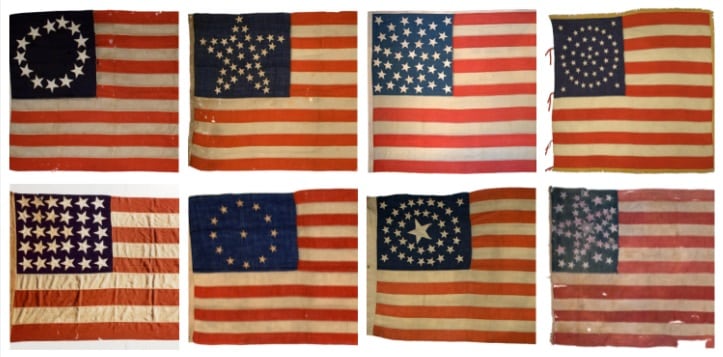MILWAUKEE- Stars and stripes, forever. Maybe. As the US Senate debates the validity of Washington D.C. becoming the 51st state, the American flag would be in line for its first makeover in 60 years.
Since its inception the American flag has gone through 26 iterations with a varying number of stars, and for a few years, stripes.
“The stripes were ultimately abandoned because, ultimately, it got too busy, because we had to many states,” says Marquette University Political Science Professor Sam Harshner says. For 23 years, between 1795 and 1818 the flag had fifteen stripes. When Illinois became the 21st state in 1819 we went back to thirteen stripes and haven’t varied since.
In the 245 years since the first flag was presented, the stars have been arranged in a handful of ways. In 1818 an alternate version of the flag had twenty stars arranged in a large star pattern, a similar design was created in 1837, though the flag was inverted in that instance. There were some circle designs as well, five of them to be exact. The Country ultimately decided on a straight line design in 1890 and it’s been that way ever since.
Harshner tells WTMJ if D.C., or any other place, were to become the 51st state, he doesn’t see the design varying very much, “It comes down to the fact that you only have so much blue space to fit the white stars.”
The current flag was approved on July 4th, 1960, adopted after Hawaii was introduced as the 50th state. It currently has thirteen stripes and nine offset horizontal rows of five and six stars.
Harshner says the adoption of a new flag is typically a quiet process following the addition of a new state, but a peaceful transfer of statehood isn’t always the case,
“Kansas got upheld for several years as a result of the south and the north fighting over whether Kansas would be a slave state but in general these are pretty consensual sorts of processes.”
Harshner says he believes the D.C. statehood fight will play out more like the battle over Kansas than the peaceful approval of a state, say, like Wisconsin.
“In this case it’s likely to be different because of the highly partisan nature of what would occur if D.C. was admitted to the union,” Harshner said. “It’s a pretty unique situation in American history, we haven’t seen anything like this since Kansas.”


























